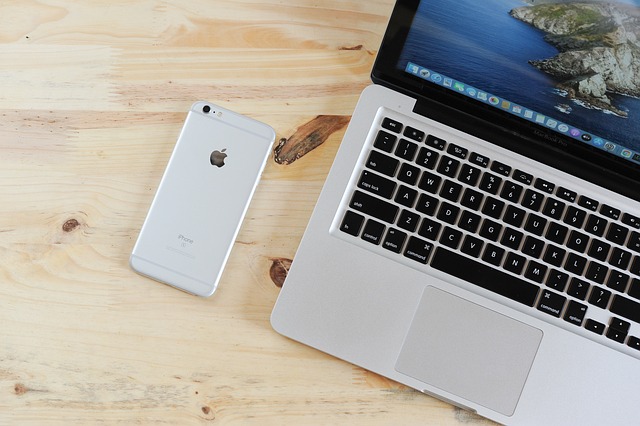Monitoring and maintaining your iPhone's battery health is crucial for its optimal performance and longevity. The built-in lithium-ion batteries have a finite number of charge cycles before they begin to degrade significantly. To assess battery status, use the iPhone settings to check for healthy battery function or if it's time for a replace iphone battery, especially when capacity falls below 80%. Environmental factors and charging practices influence battery life; thus, operate your device within optimal temperature ranges and avoid extreme charging levels beyond 80% unless necessary. Regular software updates can enhance energy efficiency and are recommended to maintain performance. Should you detect a decline in battery endurance or frequent recharging, it may be an indication that a battery replacement is due. For best results, follow maintenance practices like avoiding complete discharge, full charging, and using genuine Apple chargers. In colder or hotter climates, protect your iPhone from temperature extremes to prevent battery degradation. If you suspect your battery's performance has deteriorated, consider a professional replace iphone battery service. Additionally, leveraging power-saving modes like Low Power Mode and keeping your iOS updated can help extend battery life and potentially delay the need for a replacement.
7 Tips for Managing Your Battery Health offers a comprehensive guide to maintaining the longevity and efficiency of your iPhone’s power source. From understanding the fundamentals of how your device stores and uses energy, to mastering optimal charging habits, this article provides valuable insights. Learn to monitor battery levels, avoid extreme temperatures that can impair performance, and harness software updates for improved energy management. When it comes to a malfunctioning battery, knowing when to replace iPhone battery becomes crucial for maintaining peak device operation. Additionally, discover how to effectively leverage your iPhone’s built-in battery-saving features for an enhanced user experience. Enhance your device’s lifespan with these practical tips and ensure your iPhone remains reliable wherever you roam.
- Understanding Battery Health: The Basics of Your iPhone's Power Source
- Monitoring Your Battery Levels: Tips for Keeping an Eye on Health
- Optimal Charging Practices to Prolong iPhone Battery Life
- Avoiding Extreme Temperatures: Protecting Your iPhone Battery in All Seasons
- The Role of Software Updates and Energy-Efficient Settings
- Replace iPhone Battery: When to Consider a Battery Replacement for Optimal Performance
- Utilizing Battery-Saving Features on Your iPhone Effectively
Understanding Battery Health: The Basics of Your iPhone's Power Source

Understanding your iPhone’s battery health is crucial for optimizing its performance and ensuring its longevity. The lithium-ion batteries found in iPhones have a finite number of charge cycles before they start to degrade, which is why monitoring their status is important. Regularly checking the battery health through the iPhone’s settings can help you determine if it’s functioning within normal parameters or if it’s time to consider replacing your iphone battery. This feature provides a percentage that represents the battery’s capacity relative to when it was new. A battery with 80% capacity is typically considered healthy, while significant deviations may indicate it’s time for a replacement. Additionally, factors like temperature extremes and charging habits can affect your iPhone’s battery life. To mitigate these effects, it’s advisable to keep your device within an optimal temperature range and avoid charging above 80% unless necessary. If you notice a decrease in performance or the phone is no longer holding a charge as it should, it might be a sign that replacing your iphone battery is a good investment for maintaining peak efficiency of your device. Regular maintenance and understanding how your iPhone uses and stores energy can help preserve its battery health over time.
Monitoring Your Battery Levels: Tips for Keeping an Eye on Health

To maintain optimal performance and longevity of your portable devices, it’s crucial to monitor your battery levels regularly. Replacing an iPhone battery when its health degrades can significantly extend its usage time and improve overall functionality. Firstly, familiarize yourself with your device’s battery settings. iPhones have a feature that shows the battery’s maximum capacity compared to its original capacity. This information is pivotal in understanding the battery’s health and determining when it might be time for replacement. Additionally, take note of any changes in battery performance during typical usage patterns. If you notice your device isn’t holding a charge as well as it used to, or if it drains faster than usual, these could be early warning signs that a battery replacement is imminent. Regular software updates can also help in managing battery health by optimizing energy consumption and improving battery life. By keeping an eye on these indicators and acting promptly when necessary, you can ensure your device remains reliable and efficient. For those considering a DIY approach or seeking professional assistance, services like iFixit offer detailed guides to replace the iPhone battery safely and effectively, ensuring that your device continues to serve you well for years to come.
Optimal Charging Practices to Prolong iPhone Battery Life

To maintain the longevity and performance of your iPhone’s battery, it’s crucial to adopt optimal charging practices. One of the most effective strategies is to avoid draining your battery completely or charging it to 100% regularly. This cycle can strain the battery’s chemistry, leading to reduced capacity over time. Instead, it’s advisable to charge your iPhone when it drops to around 20-80% and to consider replacing your iPhone battery if you notice a pattern of needing to charge it more frequently than usual. Additionally, using an original Apple charger and cable can prevent issues with battery recognition and charging efficiency, which in turn supports better battery health. If you’ve been experiencing consistent battery drain or the need to recharge more often than standard, it might be time to assess your battery’s condition and consider a replacement. Opting for professional iPhone repair services that specialize in battery replacements can ensure the job is done correctly, enhancing both your user experience and the lifespan of your device.
Avoiding Extreme Temperatures: Protecting Your iPhone Battery in All Seasons

To maintain optimal battery health for your iPhone, it’s crucial to shield it from extreme temperatures year-round. Prolonged exposure to high heat can degrade the battery’s performance and capacity, potentially leading to a need for an eventual replace iphone battery. Conversely, frigid conditions can impair the battery’s ability to hold a charge. During the hottest months, avoid leaving your iPhone in direct sunlight or inside a sweltering vehicle. Similarly, in winter, keep your device warm, ideally within a range of 62 to 72 degrees Fahrenheit (16 to 22 degrees Celsius). If you’re stepping out into the cold, consider carrying your iPhone with you rather than leaving it in an unheated space. Additionally, software updates can help manage battery performance in different temperature conditions, so ensure your device is up to date. For those considering a replace iphone battery due to age-related wear, these precautions can extend the life of your current battery. By taking proactive steps to protect your iPhone from extreme temperatures, you can mitigate the need for frequent battery replacements and enjoy a more consistent and reliable performance from your device.
The Role of Software Updates and Energy-Efficient Settings

Maintaining your device’s battery health is a multifaceted task that includes regular software updates and configuring energy-efficient settings. Software updates play a pivotal role in preserving your battery’s longevity and efficiency. Developers often include power management enhancements tailored to improve the overall performance of your device. These updates can optimize how your phone’s hardware interacts with its software, ensuring that energy consumption is reduced. For instance, if you’ve noticed your iPhone’s battery draining faster than usual, considering a replacement might be a valid option, but first, check for any available software updates that could mitigate the issue.
Moreover, enabling energy-efficient settings can significantly extend your device’s battery life between charges. Features such as ‘Low Power Mode’, ‘Battery Percentage’, and ‘Dark Mode’ are designed to reduce screen brightness and background activity, thereby conserving power. Users should explore their device’s settings to find additional options like adaptive charging, which slows down the charging process when the battery is nearly full to prevent stress on the battery cells. By combining these software features with a mindful approach to app usage and ensuring your apps are up-to-date, you can effectively manage your device’s battery health and potentially extend its lifespan without needing to replace the battery immediately.
Replace iPhone Battery: When to Consider a Battery Replacement for Optimal Performance

When an iPhone’s battery health starts to wane, it can significantly impact your device’s performance and your daily usage experience. To maintain optimal performance, it’s advisable to monitor your iPhone’s battery status regularly. Apple provides a feature in the Settings app under Battery that lets users check their battery’s maximum capacity relative to when the battery was new. If you notice the battery’s capacity is significantly lower than when the phone was new—typically more than 20% below Apple’s expectation for your specific iPhone model—it might be time to consider a replacement. Additionally, if your iPhone exhibits unusual behavior such as unexpected shutdowns or a battery that drains rapidly even after a full charge, these could also signal the need for a new battery. Regular battery replacements are an integral part of extending the lifespan of your device and ensuring consistent performance. Therefore, if you’re experiencing these issues and the battery health reading in your iPhone is below average, replacing your iPhone battery with an authentic Apple battery by a certified technician can restore your device to its former efficiency. It’s important to handle this task with care, as improper replacement can lead to further complications. To ensure safety and proper functionality, use authorized service providers or reputable repair shops that specialize in iPhone repairs. This way, you can enjoy a revitalized user experience without the hassle of frequent recharging or power-saving measures that often accompany a degraded battery.
Utilizing Battery-Saving Features on Your iPhone Effectively

To maintain the longevity and performance of your iPhone’s battery, it’s advisable to leverage its built-in battery-saving features. These intelligent tools are designed to conserve power by optimizing resource usage and reducing unnecessary background activities. For instance, enabling Low Power Mode when your battery level drops below a certain threshold can extend your device’s usage time significantly. This mode limits processing and screen brightness to the essentials, ensuring that you can continue using your iPhone without needing to replace its battery prematurely. Additionally, keeping your software up-to-date is crucial for battery health; Apple often includes power management enhancements in new iOS versions. Regular updates can improve system efficiency, which translates to better battery performance over time. If you find that your iPhone’s battery life is consistently short, it might be time to consider a replacement. However, before jumping to that conclusion, give these energy-saving features a try and observe the impact on your device’s endurance. By doing so, you can extend your current battery’s lifespan and potentially delay the need for a replacement altogether.
In conclusion, effectively managing your iPhone’s battery health is a blend of understanding its functioning, consistent monitoring, and adopting optimal charging practices. By avoiding extreme temperatures, staying informed about software updates, and leveraging energy-efficient settings, you can significantly prolong your device’s battery life. When your iPhone’s performance noticeably dips or its battery no longer holds a charge as it once did, considering a replace iPhone battery might be the most cost-effective solution to restore efficiency. Utilizing your iPhone’s built-in battery-saving features wisely can further extend its usage between charges. Implementing these seven tips will help ensure your iPhone remains reliable and efficient, maintaining its performance over time.
